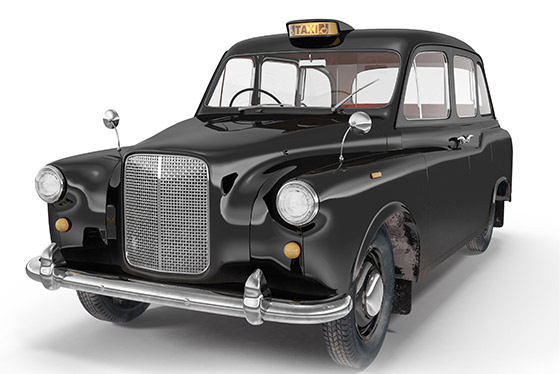What is a car insurance band? Is it applicable in India?
Vikram is a 26-year-old office-going employee. He has been wanting to purchase a budget car to spare him the trouble of boarding the metro or a public bus every morning to work. But there are several aspects he has to bear in mind. Purchasing a car would mean buying a valid policy, paying premiums, and renewing the policy. Therefore, he considers all factors before making a purchase.
The Indian Law, under the Motor Vehicles (Amendment) Act of 2019, states that an individual owning a motor vehicle must also possess valid car insurance or at least a third-party liability cover. With that ball rolling, owning a car brings with it several other expenses you cannot keep at bay. Purchasing the insurance and paying monthly or annual premiums seem to be hard on your pocket.
Systematized procedures are adopted to determine insurance premiums. The insurance premiums for motor insurance in India are based on several independent factors. However, countries like the UK have a distinct approach. They do so through a car insurance band.
What Is a Car Insurance Band?
Are questions like “what is a car insurance band? Is it applicable in India?” floating about in your head, ‘driving’ you crazy just like Vikram? You have reached the right spot. Read on and find answers to all your queries right here.
A car insurance band consists of 50 separate classified groups that stratify cars from the cheapest to the most expensive to insure. Every motor car falls under one of these 50 bands. A research collaboration consisting of members of the Association of British Insurers and the Lloyd’s Market Association, supported by Thatcham Research, work together to classify cars into these determined categories. While vehicles falling into the low categories have slashed premium rates, those falling under the latter groups have higher premiums.
Assorting Cars into Insurance Bands
Numerous factors are taken into consideration before classifying cars into different car insurance bands or groups. Are you keen on understanding the method of characterization? We’ve broken it down for you:
- The age of a car is a great determinant to gauge its potential repair and replacement costs. The frequency of repairs and replacements of car parts hints at its insurance band.
- The susceptibility of a vehicle to damage also determines its band rating. If the vulnerability of a car to damage is high, so will its insurance band, which means a higher premium.
- Low-priced parts and repair expenses usually mean a low rating, and high-priced, rare parts and soaring repair costs denote a higher band rating.
- The period that goes into repairing a car is directly proportional to its insurance band rating. Long repair periods denote a higher band rating as the costs incurred are much higher than short repair periods.
- A high-performance vehicle with a bigger engine is at a higher risk of mishap. Thus, increasing the chance of insurance claims. Therefore, speed, performance, and acceleration are taken into account.
- Installation of security and safety features in a car also determines its exposure to misadventures. AEB (Autonomous Emergency Braking) systems, high-security door locks, alarms, and immobilization systems reduce risk exposure. This classifies the car into a lower insurance band.
- Bumper compatibility of a car also has a bearing on its insurance band assortment. Here, the structure and alignment of the bumpers on a car play a pivotal role.
Factors That Regulate Car Insurance Premiums in India
India accounts for 1% of the world’s vehicle population, and owning a car insurance policy is made compulsory by the law, as Indian roads account for 6% of global road accidents. While insurance is the best expense you incur, paying monthly or annual premiums can seem to burn a hole in your pocket. But hey! It is better to be safe than sorry! You can ditch the worries of exposing yourself to the unforeseen financial burden that an unfortunate event can bring your way with comprehensive insurance.
India does not follow a car insurance band system to determine insurance premiums. However, innumerable factors are taken into consideration while ascertaining the premium amounts and rates in India. Let us take a closer look at these determinants, considering Vikram’s example.
- Age- Vikram’s age will influence his premium amount. Insurance companies perceive individuals between 18-25 years of age to be more involved in an accident, increasing the chance of a claim. Thus, premium rates for drivers below the age of 25 are comparatively higher. Since Vikram is 26, he has to pay a comparatively slashed premium.
- Model- High-end cars attract higher premium amounts for apparent reasons. If Vikram looks forward to purchasing insurance for his Santro or Alto, his premium amount will be much less. However, if he wishes to acquire insurance for his Bentley or BMW, he has to pay a bulky sum as a premium every year as repair costs of luxury cars will be much higher in case of a mishap.
- Place- Since urban areas have a sky-rocketing vehicle population, the chances of accidents are also over the odds. Being a resident of an urban locality, Vikram is subject to a high premium on his car insurance.
- Type of Fuel- Cars running on CNG have a higher premium than those running on petrol or diesel.
- Year of Manufacture- The amount of premium Vikram pays each year also depends on the newness of his car. If his car is old, the IDV (Insured Declared Value) is less, resulting in a lower premium amount and vice versa.
- Subsidized Amounts- Had Vikram been defence personnel or a government employee, he would have received an additional discount, reducing his premium amount. Since he is a regular civilian, his premium amount is not subsidized.
- No-claim Bonus- If Vikram avoids pressing a claim for minor scratches and dents, he can benefit from no-claim bonuses when there are no claims made for an entire year. This bonus can be redeemed as a discount while renewing a policy or subtracted from the next premium. However, in the absence of such a bonus, Vikram’s premium amount remains unaltered.
- Anti-theft Devices- Vikram installs his car with safety and security gadgets approved by ARAI, reducing its susceptibility to thefts and vandalization. In such a case, his car insurance premium will be much less, as the risk of damage to the vehicle is minimal. The chances of an insurance claim will also come down.
However, on the brighter side, there are ways to bring down your premium amount.
- By purchasing and renewing his motor insurance plan online, Vikram can reduce operating costs, as it involves minimal paperwork, reducing his premium amount.
- Vikram can also cut down on his premium amount by avoiding modifications. Modifying your vehicle can affect your car insurance and also hike your premium amount. Thus, by not making any such modifications, you can save on your effort and money.
Endnote
Vikram can now make an informed decision after his thorough research. Purchasing a car and insurance can go easy on his pocket if he follows the various ways of keeping his premium low and procures his car insurance policy online.





























